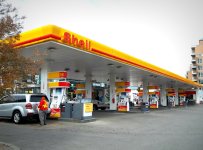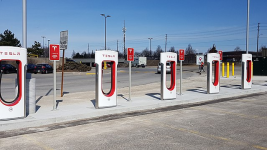According to the interweb, as of a few months ago, California had 14,000 fast-charging stations which included 38,000 fast-charging ports. The balance of "80,000" will be public access Level 2 AC chargers (which are slower). I don't know how many private Level 1 or Level 2 chargers there are ... probably approaching one per vehicle ... but keep in mind that a Level 1 charger could be the 120V AC one that comes with the car, plugged into any available receptacle. No installation no permit no nothing.
In 45,000 km, the number of times my own EV has been plugged into a DC fast-charger, total, ever, remains possible to count with my fingers.
couple things here. The auto manufacturers that gave away DC fast-charging for free without limits, aren't doing the system any favours. Those people are sitting occupying DC fast-chargers charging slowly to 100% while other people are waiting. The charging station networks that are charging by kWh and are not implementing idle fees, are also not doing the system any favours. They're likewise getting people sitting charging to 100% for hours and sitting occupying the spot afterward because it's not costing them anything. (Ideally, at something like 90% they should start billing for time, and then double it if the car remains plugged in and not charging.) The charging networks that are not fixing broken chargers (*cough* Electrify America) aren't doing the system any favours. Those chargers are counted in the total but not doing anybody any good.
Random spot check on Plugshare. Open Plugshare. Filter for 50kW minimum power (includes only fast-chargers). Zoom in on California. I am looking only at SAE J1772/CCS stations (not Tesla) because that's what my car uses. There's a bazillion of them. Zoom in on Interstate 5 about halfway between LA and San Fran. Chevron ExtraMile Coalinga, Chargepoint. Among the three available CCS/SAE plugs at that station, 2 are available, 1 is not. Random check a little further south at a Chargepoint Dennys in Lebec, CA. 3 stations, 3 chargers available. How about along I15. Baker Travel Centre. Another Chargepoint. 3 stations available, 1 not.
And yes, I am aware of *some* situations where people have been lined up at fast-chargers waiting for a spot. I've not had it happen, and at least right now as of this very moment, it is not the case at any of the randomly selected spots.
Looks like Electrify America doesn't report charger status to PlugShare. That's a nuisance.

















